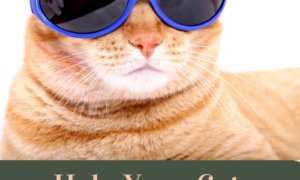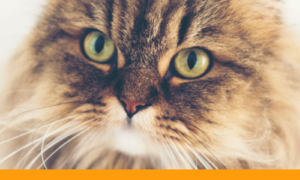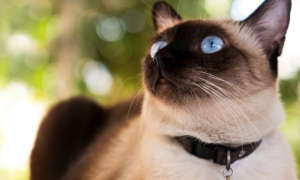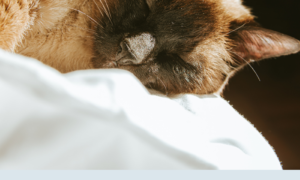 The origins of the Persian cat breed date back to the 1600s, when an Italian traveler introduced the first longhaired cats to Europe.
The origins of the Persian cat breed date back to the 1600s, when an Italian traveler introduced the first longhaired cats to Europe.
Disclosure: This post contains affiliate links. We receive a small commission on goods purchased via these links, at no additional cost to you.
Pietro della Valle encountered a long haired breed in Persia and imported several of them to Italy. Soon after, white longhaired Angora cats were exported to Britain and France.
The two breeds, although both long haired, had different physical characteristics. The Angora was smaller and finer boned than the Persian, and by the beginning of the 1900s, England’s cat fanciers chose the Persian as their favorite over the Angora.
This breed’s appearance has changed over the years, they now have broader, flatter faces than they did previously.
Persian Cat Appearance
The Persian is a muscular, medium to large cat with short, thick legs. They have a large, round head, short nose and round eyes. Their ears are small and set low on their head. Their eye color depends on the color of their coat (there are more than 50 Persian colors and patterns).
They have a dense, soft and silky coat that covers their entire body. Although a Persian’s coat is beautiful, it requires daily brushing to prevent mats. It’s recommended that Persians be bathed monthly.
Persian Cat Personality
Persians are one of the most placid cat breeds. They are good with older children and love being lap cats. Considered gentle, quiet and sweet-natured, not much bothers them. Persians often aren’t very vocal, but for those that are, their voices have been described as melodious by their owners. This breed does’t tend to be independent, so if your schedule would mean leaving them alone for long periods of time, a cat companion would be a good idea.
A Persian will often pick a favorite human and like spending time with them. They don’t usually demand attention, but time sitting on their human’s lap is a favorite activity.
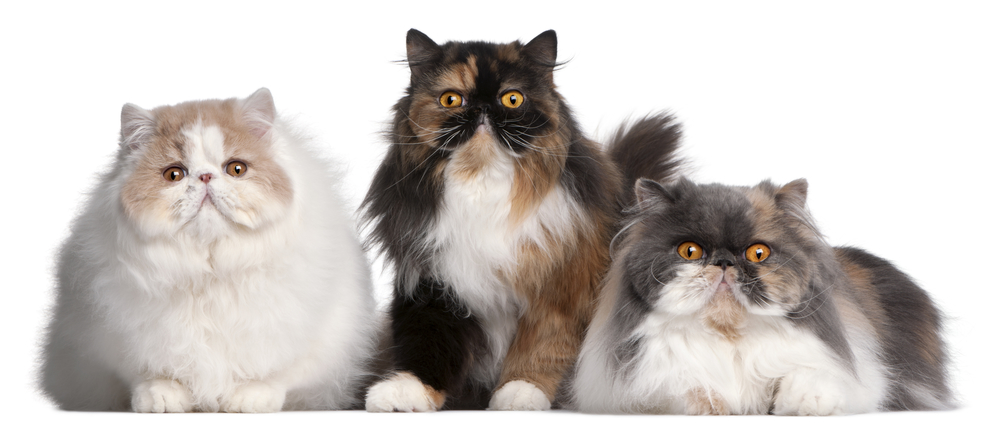
Caring for Persian Cat
Because of their long coat and facial structure, there is more daily care needed for this breed. To maintain their coat and prevent mats, Persians need to be brushed daily. Because their skin is quite sensitive, It’s important to get the right type of brush to remove mats without pulling.
Their facial structure makes Persian cats more susceptible to respiratory problems and infections. To reduce this risk, wiping their nose daily is recommended.
Persians also need special care for their eyes. Their facial structure prevents fluid from their eyes to drain properly, so it is important to wipe their eyes daily.
The Persian is a long haired cat, and does shed quite a bit, so vacuuming will be more frequent.
Persian Cat Health Problems
Persians are prone to several health problems, due in part to their facial structure. Possible health issues include: tear overflow, constricted nostrils, cherry eye and seborrhea.
Another health condition to be aware of is polycystic kidney disease (PKD), a genetic disorder that affects 1 in 3 Persian cats.
This breed is notorious for litter box problems, they don’t like litter to get stuck in their fur or to their feet.
Conclusion
These cats are very in tune with the needs of their people. If you are willing to take the extra steps with their care to keep them healthy, and live in a quiet, calm home, a Persian can be a great companion.
For more information on caring for Persian cats, check out our blog friends, Sweet Purrfections


